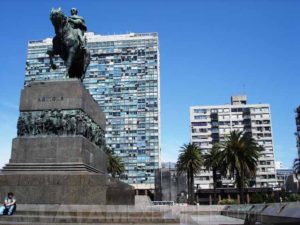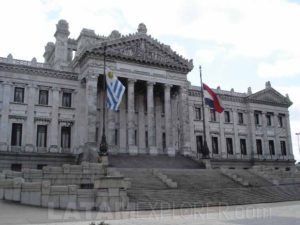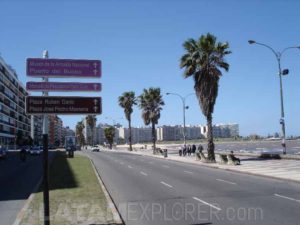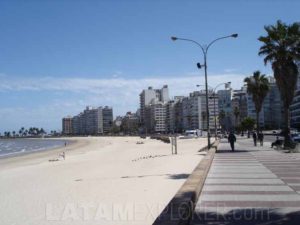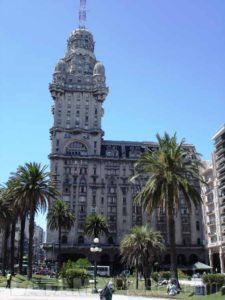Home > Destinations > Uruguay > Montevideo
Montevideo, Uruguay
Montevideo is the capital and largest city of Uruguay, in addition to being the seat of the administrative headquarters of Mercosur. With a population of nearly 2 million people, its metropolitan area is home to nearly 60% of all Uruguayans. The Carrasco International Airport, 21km (13mi) east of downtown, is the city’s main gateway, offering direct flights to various destinations in neighboring countries as well as a few ones to Europe and North America. Alternatively, Buenos Aires has a larger number of international connections and is just 2h30 away across the River Plate, on a ferry trip held several times a day. The Uruguayan capital is also served by several international bus services that connect it mainly to destinations in Argentina and Brazil, but also in Chile and Paraguay.
Plaza Independencia is a good place for starters willing to get to know Montevideo. This square is located at the heart of the city, on the eastern end of the historic district, serving as a kind of bridge between past and present. Some of the most representative buildings of the capital lie around this square, as exemplified by the Palacio Salvo, once the second-tallest building in South America, the Torre Ejecutiva and the Estevez Palace, headquarters of the Executive Branch of the Uruguayan Government, and the Teatro Solís, the main stage of the city. The center of the square is occupied by a monument honoring General José Artigas, erected over the mausoleum of this national hero. The square’s exit to Sarandi Street features the Citadel’s Gate (Puerta de la Ciudadela), one of the few stretches left of the ancient wall that surrounded the oldest part of Montevideo.
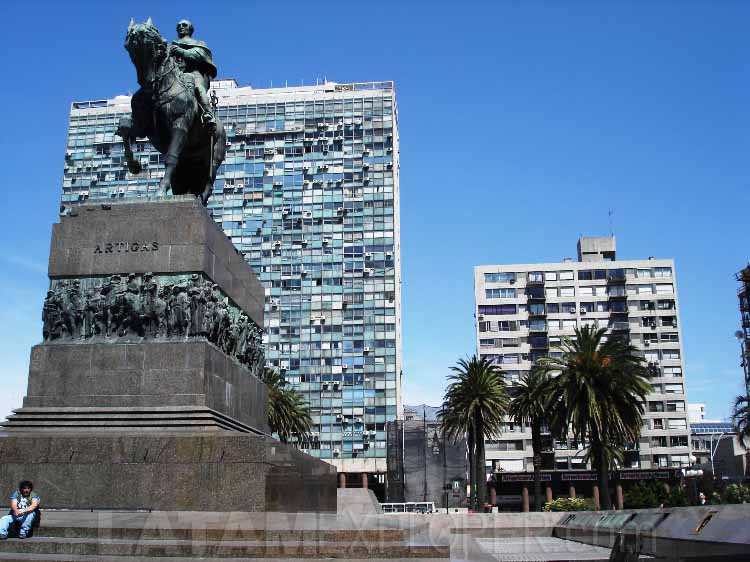
Sarandi Street is dedicated exclusively to pedestrian traffic for much of its length and houses many cafes, bars, restaurants, art galleries, bookstores and antique shops. Just two blocks beyond Plaza Independencia you will find the Plaza Constitución. One of the first open spaces designed in the city, this square is surrounded by the buildings of the Cabildo and the Metropolitan Cathedral, whose construction began in 1790. The square houses an antiques market every morning, besides several spontaneous artistic and cultural events.
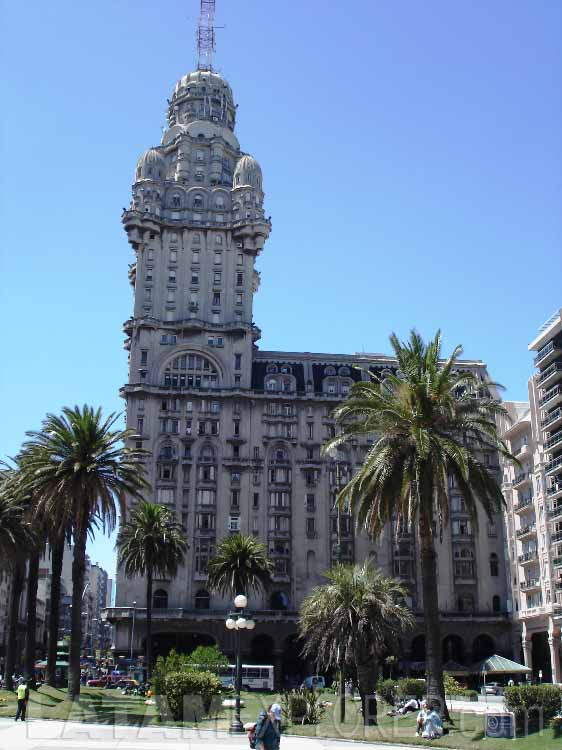
Montevideo is located on the River Plate banks and one of the most characteristic areas of the city is precisely its coastal promenade, made of several avenues collectively known as La Rambla. Heading north from the historic center and following the river you arrive at the passenger’s pier, from where ferries leave for Argentina and where some cruise ships dock mostly during the summer. Walking a few blocks east, the Legislative Palace of Uruguay will be waiting for you. This building was constructed between 1908 and 1925 and is one of the main tourist attractions of the capital.
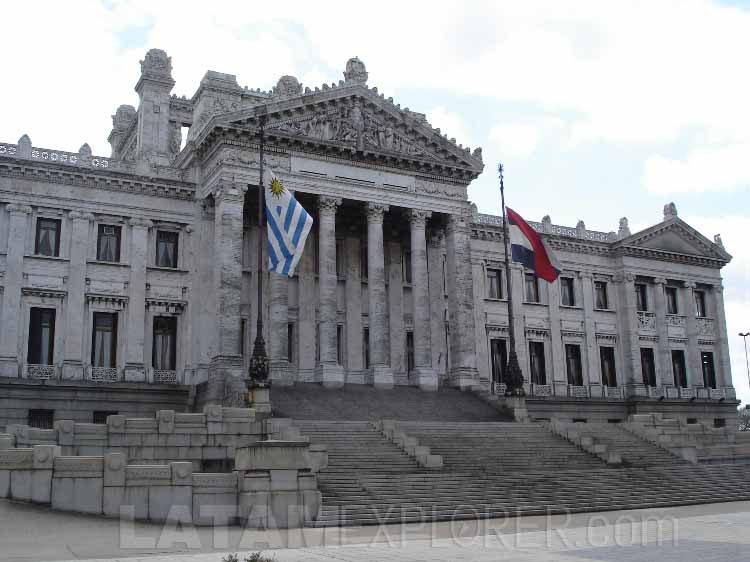
Taking the southern sector of the Rambla and heading east from the historic center, you will reach its most attractive part, ideal for walking at dawn or sunset and to practice sports. About 4km (2.5mi) after leaving the historic center you’ll arrive at the Rodó Park, one of the largest green areas of the city, covering 43 hectares (106 acres). This park has several species of trees and a lake served by paddleboats, tennis courts, the Museum of Visual Arts and several monuments. South of Rodó Park there is a golf club and, further on, in the area known as Punta Brava, lays the lighthouse of Punta Carretas, at the southernmost point of the city. Montevideo is by the way, by a small margin, the southernmost capital of South America. The neighborhood of Punta Carretas, just north and east of the lighthouse, near the golf club, is one of the most exclusives in the city.
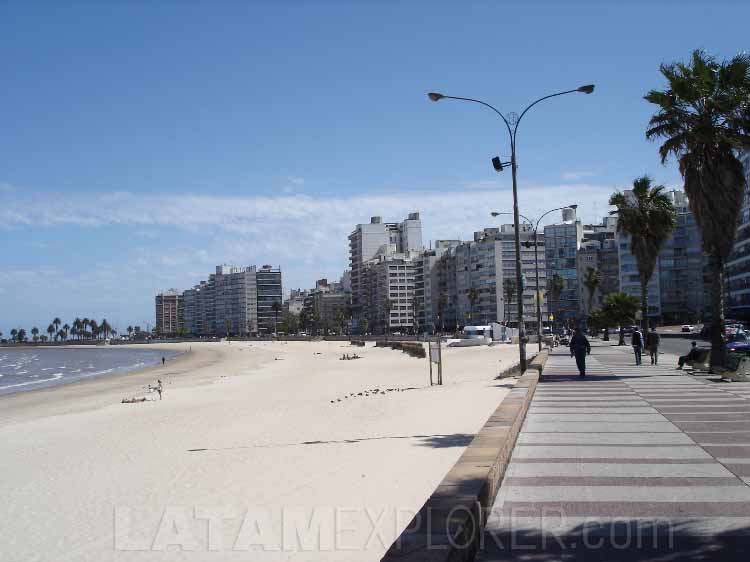
Another point of interest for many visitors to the city is the Batlle Park, located 3 km (1.9mi) north of Punta Carretas. This park is home to several sporting facilities, including the Estadio Centenario, opened to host the first World Cup, held in Uruguay in 1930. The park also houses the Monument to La Carreta, named after the means of transport originally used in the Uruguayan countryside and declared a national historic monument. Across the Bay of Montevideo, 12km (7.5mi) away from the city center, lies the Montevideo Hill, which houses the Fortaleza del Cerro (also known as Fortaleza General Artigas), a military fortress built in the early nineteenth century that houses the first lighthouse of the River Plate, besides a military museum. The views from the top of the hill, at a height of 135m (440ft), over the bay and the city are worth the visit by themselves.
Once your visit to the capital of Uruguay is concluded, you can head towards the interior of the country. The oldest city in Uruguay, Colonia del Sacramento, is located 180km (110mi) west of Montevideo, while the main resort of the country, and one of the most important in South America, Punta del Este, is 150km (90mi) east of the capital. The nearest border with Argentina can be reached at the city of Fray Bentos, 300km (185mi) away, while Chuy, on the border with Brazil, is 350km (215mi) away from Montevideo.
